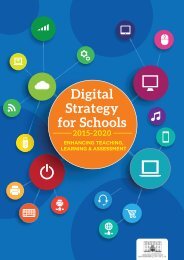K3zgZ
K3zgZ
K3zgZ
Create successful ePaper yourself
Turn your PDF publications into a flip-book with our unique Google optimized e-Paper software.
TRADOC Pam 525-8-2<br />
c. Decentralization. The Army increasingly empowers lower echelons of command with<br />
greater capabilities, capacities, authority, and responsibility. This requires leaders who can think<br />
independently and act decisively, morally, and ethically. Decentralized execution under mission<br />
command is the norm. Current and future operational environments will place increased<br />
responsibility on Soldiers to make decisions with strategic, operational, and tactical implications<br />
while operating in complex environments and employing combined arms teams. These<br />
operations demand increased understanding of geopolitical, cultural, language, technical, and<br />
tactical knowledge for leaders at all levels, to include the “strategic corporal.”<br />
d. Master fundamentals. Currently the Army has extensive combat experience that provides<br />
an in-depth understanding of the fundamentals that contributed to mission success in<br />
counterinsurgency operations. Mastering and sustaining core fundamental competencies better<br />
support operational adaptability than attempting to prepare for every possibility. The<br />
fundamental competencies must be clearly identified to support executing future full-spectrum<br />
operations and time must be allotted to attain proficiency through repetition and time on task.<br />
This is particularly important in the Reserve component due to the limited amount of time<br />
members of the Army Reserve have to spend on military duties. The Army’s learning model<br />
must provide opportunities for the Army to continuously assess and build mastery of<br />
fundamental competencies.<br />
e. Culture and language. The Army operates with and among other cultures as part of a joint,<br />
interagency, intergovernmental, and multinational force, engaging adaptive enemies where<br />
indigenous populations, varying cultures, divergent politics, and wholly different religions<br />
intersect. This requires developing Soldiers who understand that the context of the problem<br />
matters and that their understanding of the non-military world of foreign societies and cultures be<br />
broadened. Soldiers and leaders need to learn general cultural skills that may be applied to any<br />
environment as well as just-in-time information that is specific to their area of operations. The<br />
Army culture and foreign language strategy requires both career development and<br />
predeployment training to achieve the culture and foreign language capabilities necessary to<br />
conduct full-spectrum operations. 15<br />
f. Capitalize on experience. Recent operations provide Soldiers with a wealth of operational<br />
experience that contributes to peer-based learning in today’s classrooms, through blogs, and<br />
other media. The future learning model must offer opportunities for Soldiers to provide input<br />
into the learning system throughout their career to add to the body of knowledge, and utilize<br />
recent combat veterans as learning facilitators. The learning model must account for prior<br />
knowledge and experience by assessing competencies and tailoring learning to the Soldier’s<br />
existing experience level and adjust to take advantage of changes in Soldier and leader<br />
experiences over time.<br />
2-3. Learning environment factors<br />
A review of recent research and learning trends led to the selection of five key learning<br />
environment factors (see figure 2-2) that will influence the future Army learning model. A<br />
common theme is the growing influence of information technologies. This influence is having a<br />
profound effect on learning approaches in higher education centers, primary and secondary<br />
11




